I was recently invited to Oslo for a 24 hour press trip to learn more about three Norwegian businesses. It was my first time in Norway but the last of the Nordic countries I had yet to visit. We didn’t get to see the fjords as they are all on the western side of the country, but we travelled north of the city through what is known as the Tuscany of Norway. I think this basically means it’s green rolling hills as opposed to green mountainous land. I wanted to share these trips with you as interior design is all about stories. Mostly we tell our own stories through the medium of our rooms and decor but it’s also fascinating to learn the stories behind brands and understand their ethos. This is particularly true at a time when we are all trying harder to shop more mindfully, to be more aware of where the things we choose to surround ourselves with come from and what they are bringing to our homes with the stories they are telling. So grab a cup of coffee and a biscuit and let us begin.
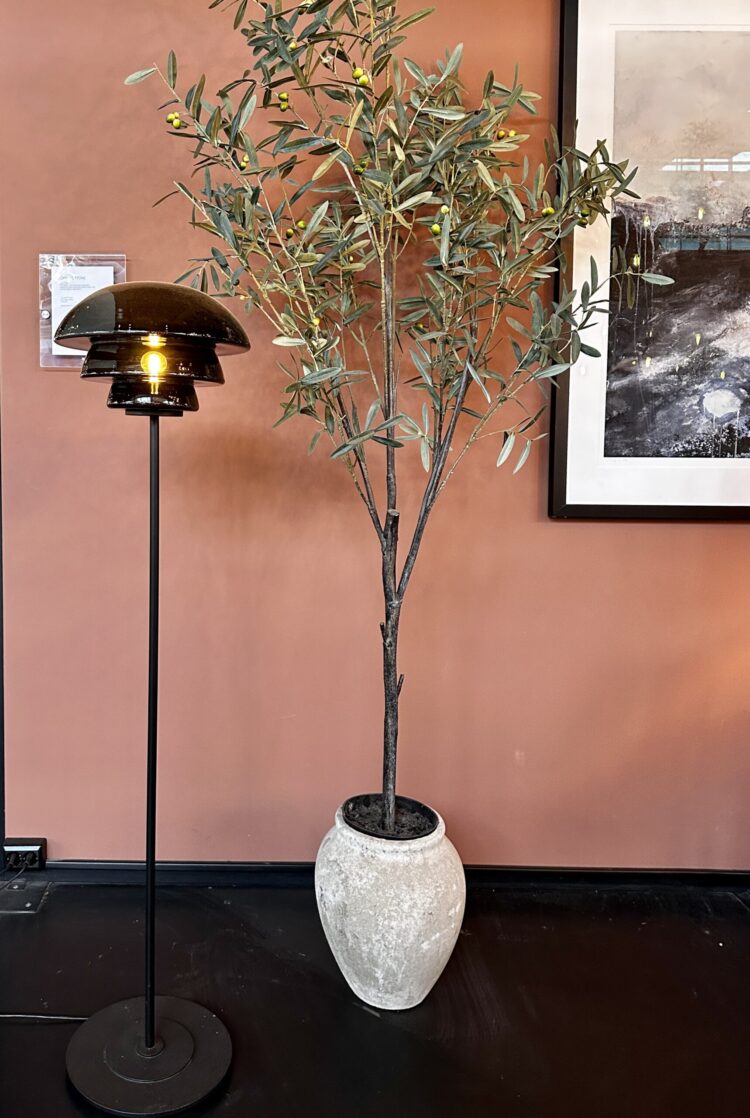
HADELAND GLASSVERK
Our first stop was the glass factory of Hadeland set up by the King of Denmark 260 years ago (1762). He wanted a place that would make beautiful glass for his palace and, as Norway had not yet discovered the oil that would make it richer than all its neighbours it was a poor country that was governed both by Sweden and Denmark over the years.
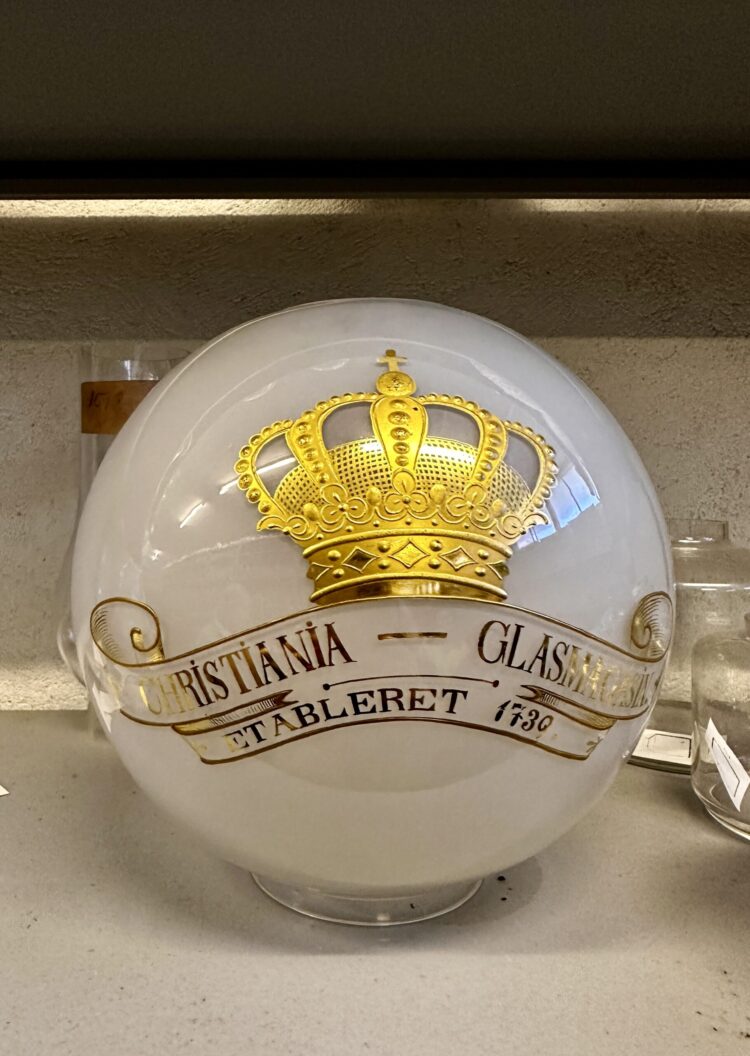
The factory is open to the public and has around 500,000 tourists a year. It was quite extraordinary to see people wandering around near the 1130C kilns and the glass blowers in shorts and t-shirts. It reminded me of visiting the boiler geysers in Iceland where there was a simple sign saying “Hot”. In the UK one imagines that there would have been fences and warnings and keep out signs.
The factory has a huge archive of some 34,000 pieces including car headlights as well as tableware, glasses and lampshades.
When the factory first opened they used the sand from the lake it sits by but this wasn’t pure enough for clear glass, which came in in 1800 when Hadeland began importing sand from Belgium and Holland.
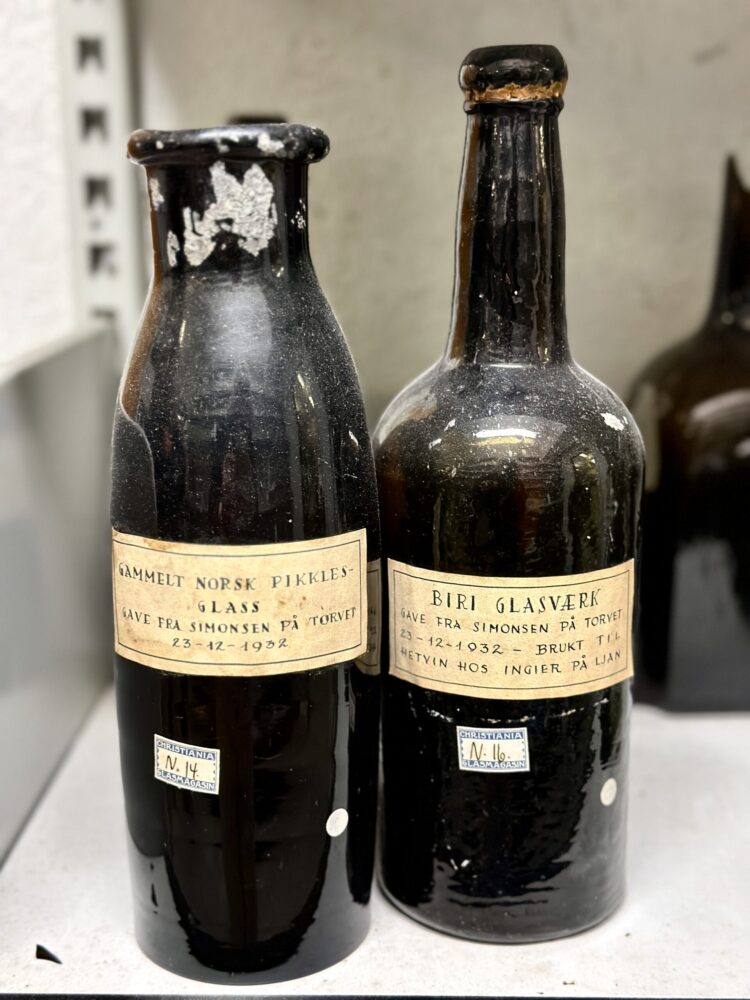
Until 1926 they bought designs from France and Germany but after that they began making their own designs and nothing has been bought in since. The style is like cut crystal and they are introducing a wider range of colours alongside the classic clear and, currently fashionable, opaline or milk glass.
I don’t know how much you know about glass making but in addition to blowing it is also made in wooden moulds. These moulds, made from beech wood, which can be used about 300 times each, have to be kept in water otherwise they dry out and warp. There isn’t room to keep them all submerged so some archive designs are left on shelves in sheds and have to be soaked for about six weeks before they can go back into production.
Any broken pieces are remelted down to be used again so they create as little waste as possible.
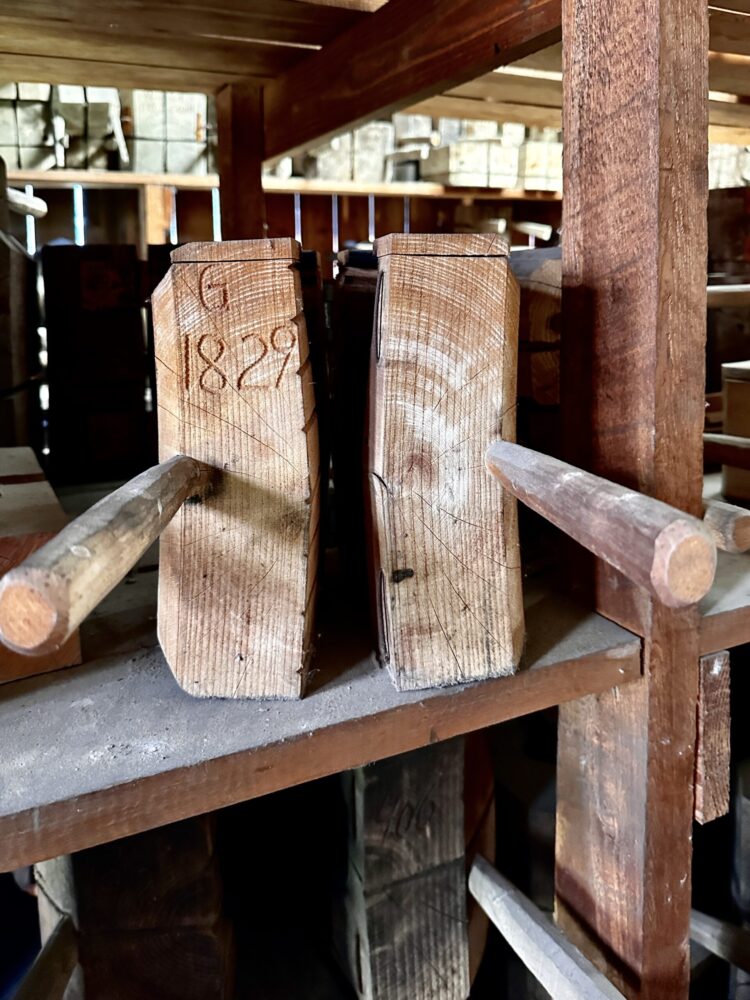
You can buy Hadeland glass at Liberty and Heals and visit their newly opened showroom at the Design Centre in Chelsea Harbour.
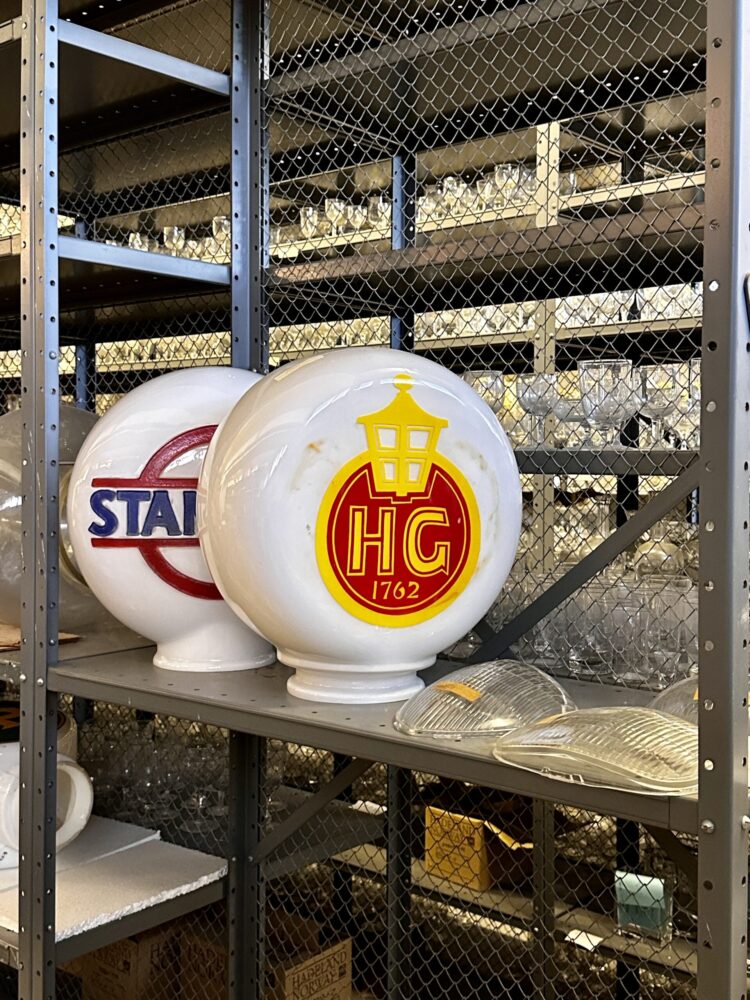
LUNDH’S STONE AT EVI KITCHENS
On the second day we were taken to the Evi kitchen show room, where the worktops are provided by Lundhs stone, a family business that quarries the hard-wearing Larvikite and Anorthosite which, unlike the more sensitive Italian marble is heat resistant up to 300C and needs no sealing. It’s also naturally stain resistant to wine, citrus, coffee and oil which is worth knowing.
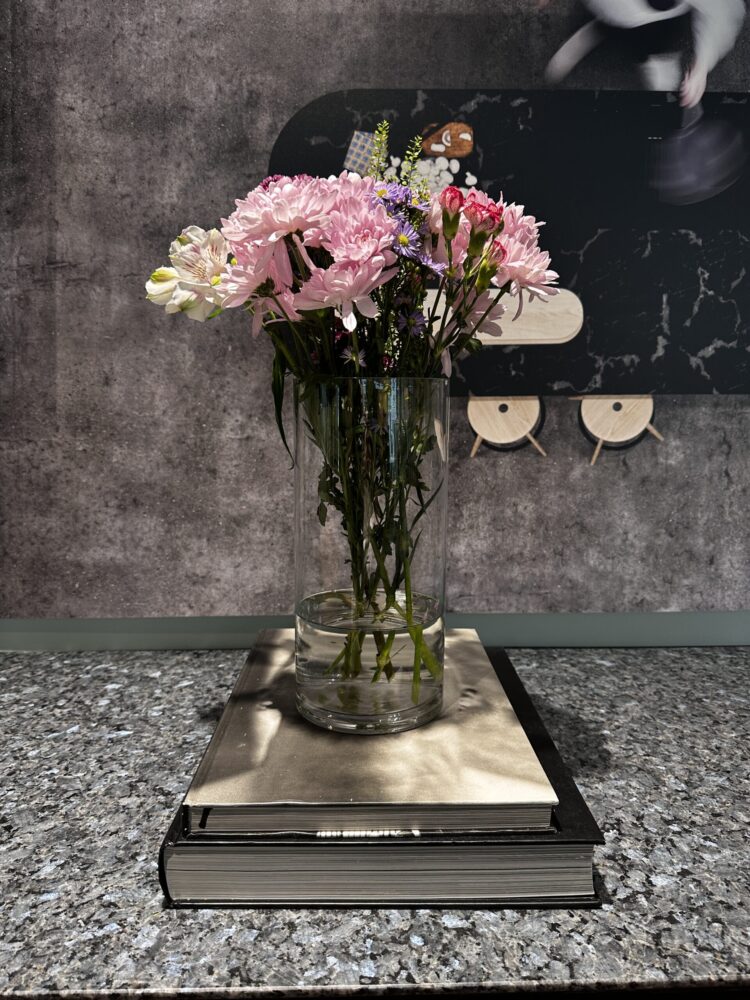
In keeping with the country’s focus on sustainability, Lundhs is aware that it is working with a natural resource and when they work with Evi on kitchens, many of the countertops are designed to click on and off with no glue so they can be removed and reused after refurbishment. This means you can move house and redesign your kitchen and keep the same worktop, which has got to be the way forward.
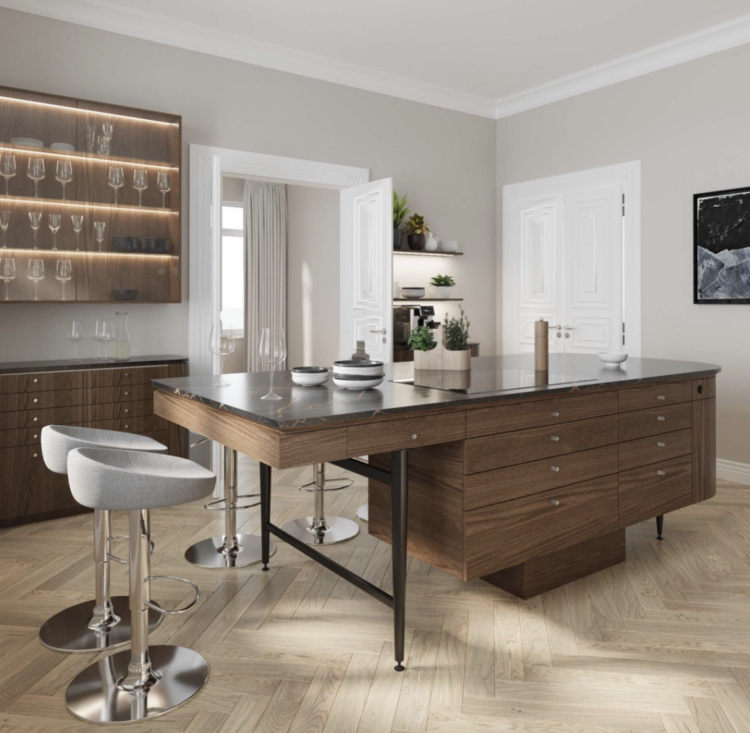
Now I promised you some thoughts on kitchen design and Evi have approached this in a way that feels obvious when you say it but I’m not sure how much it’s happening generally. Before coming up with a design they talk to architects, chefs and estate agents. The latter because they have real experience of real homes – which we know are getting smaller as more people live in urban spaces.
Their research found that cooking and living spaces are blending together more and more as people live in open plan or just smaller rooms where there isn’t the space for separate rooms.
This is where the design for kitchens that don’t look like kitchens is coming to the fore as you don’t necessarily want your living room to look at your oven and washing up. So it’s about creating furniture for your kitchen that blends in with your décor.
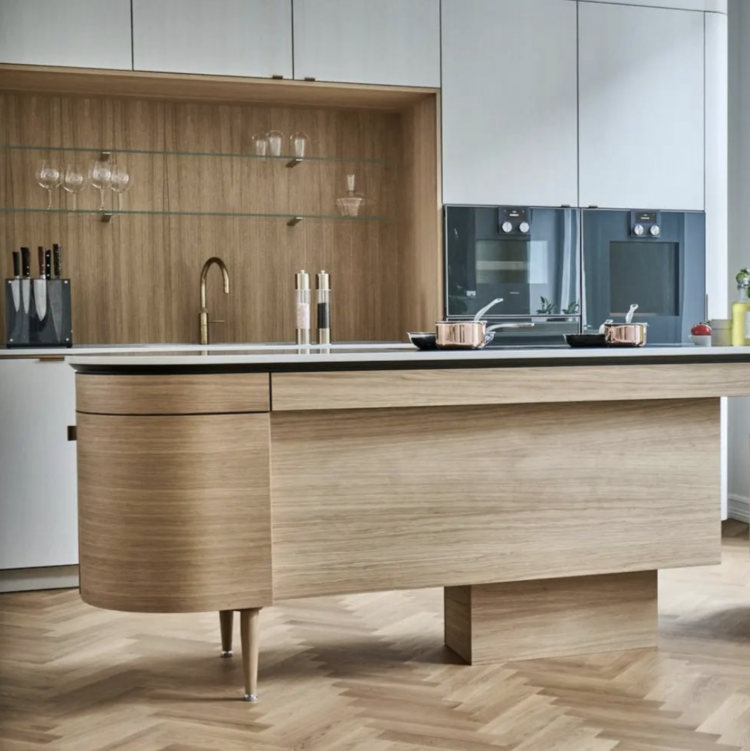
There has been a lot of talk recently about the end of the kitchen island. I think it’s about the end of the heavy block of cupboards that dominates the centre of the room in favour of something lighter and more open.
At the moment that looks more like a vintage butler’s table with drawers underneath but that only works if you’ve got space for your appliances round the edges. Evi have created and island that looks like a piece of furniture but might be a different levels so it can be a table as well as storage.
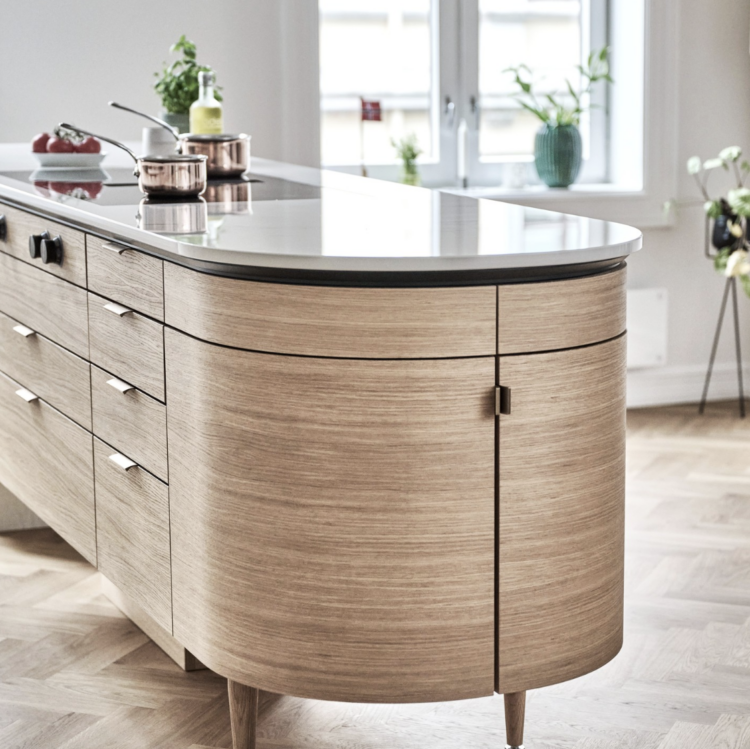
They were also keen to talk about their curved edges. Now I have traditionally not been a fan of curves in kitchens but when it’s a large curve it creates a triangle cupboard which is much more space efficient for storing large round plates than a square or rectangle.
Cupboards are narrower – 40 rather than the traditional 60cm deep so you don’t lose stuff at the back and it takes up less space in the room.
And finally, they are also researching how our food tastes have changed. More people are vegetarian and vegan so does that impact the way we store our food? We already know that we need more bin space for recycling.
They haven’t figured it all out yet and I don’t know if British companies are doing similar research (one imagines they must be) but in case they’re not, and in case you’re planning your own new kitchen then this might make you more aware of things you should be asking them to think about.
EIKUND FURNITURE CLASSICS
Our final visit was to a boutique hotel by the port which serves as an unofficial showroom for the Eikund furniture brand.
The America Line hotel marks the start of the journey for many poor Norwegians to the US in search of work. It’s back to the start of this post when Norway was a poor country that was split between Denmark and Sweden. Many Norwegians went to the midwest where their names survive today.
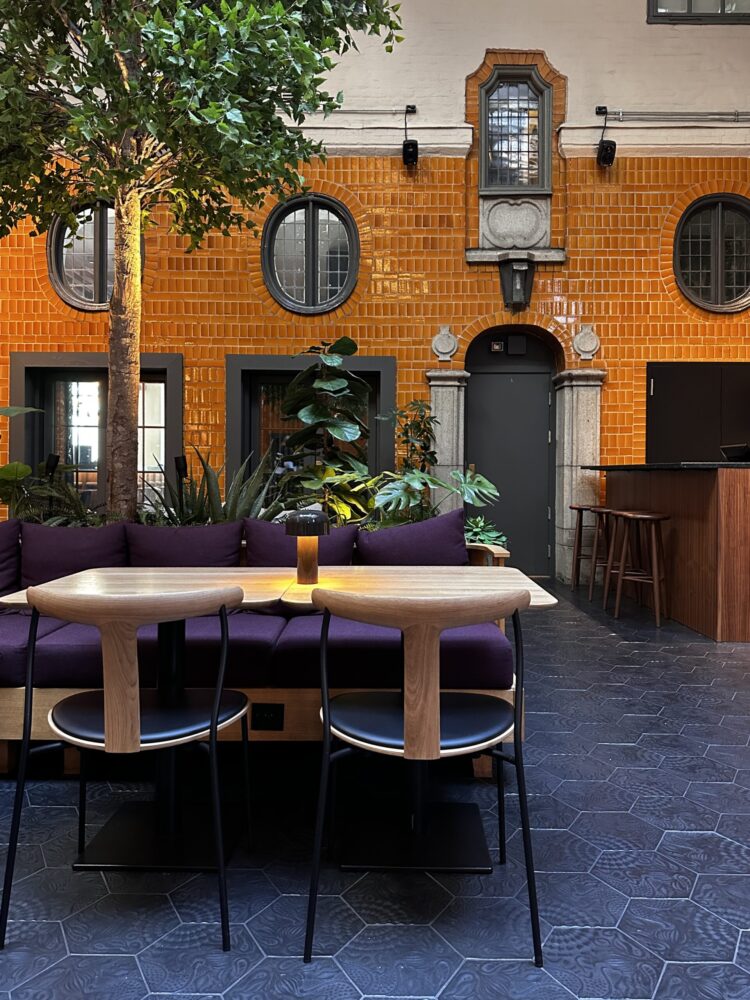
The hotel is based around the stories they sent back of life in America – tales of jazz clubs and chocolate, cocktail bars and burgers.
It’s a really cool place and while we were unable to stay when we visited as it was full, I would look it up if you are visiting the city.
Into this room at the back, once a courtyard and now covered over and used as dining room comes the furniture by Eikund.
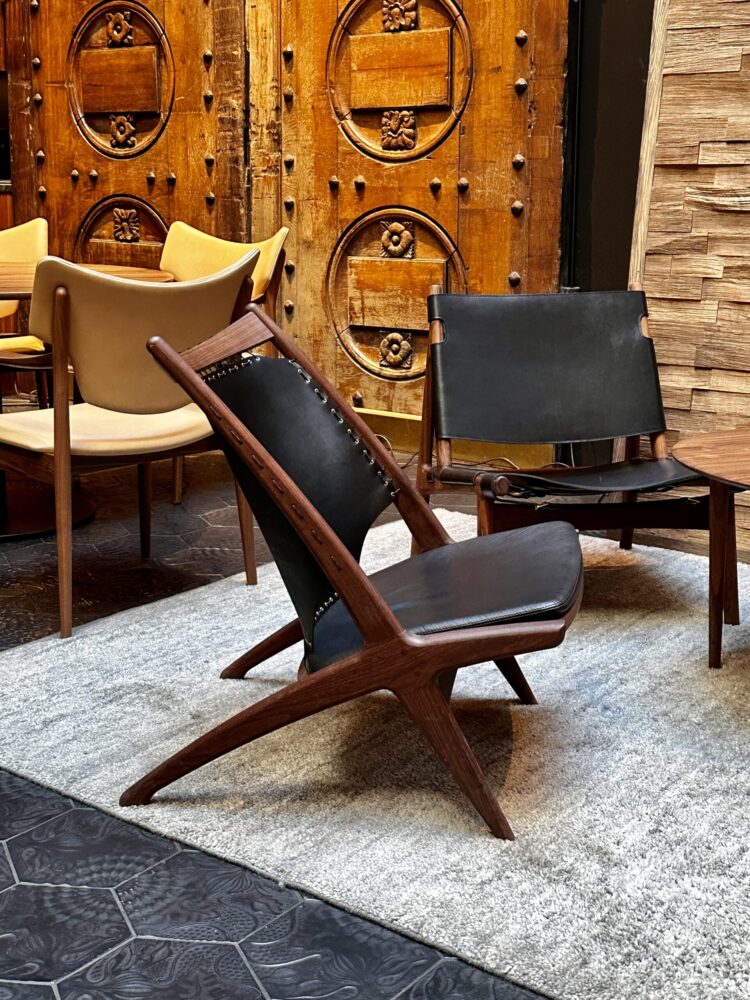
Established in 2016, the founders wanted to find all the forgotten classics of mid-century furniture that were no longer in production. After all, many of their designers went to the same schools as the more famous Danes (Finn Juhl, Hans Wegner, Arne Jacobsen) but the pieces are no longer made.
So they went on a treasure hunt. Tracking down the descendents of those designers and asking to rummage in their basements and lofts for the original drawings. They found so many and after buying the design rights from the families and splitting the royalties they have started to remake many of those original designs. There are currently 13 pieces in production with two more coming imminently.
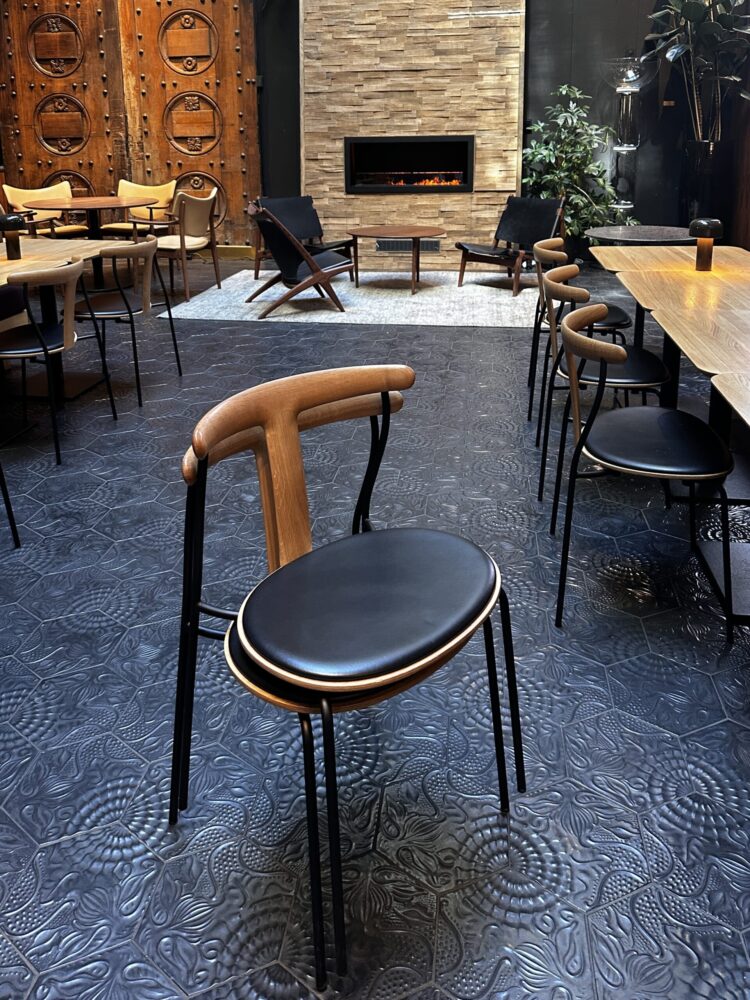
Of all the stories from Norway this was the one I loved most. One of the designers died at the age of 44 when his daughter was 14. She is now 63 and told Eikund that seeing her father’s designs brought back to life was like having him back again.
Both Eikund and Lundhs Stone are available via the showroom at Chelsea Harbour.
If you are visiting Oslo be sure to also check out the Opera House and the Munch Museum – the picture below was taken at 11pm.
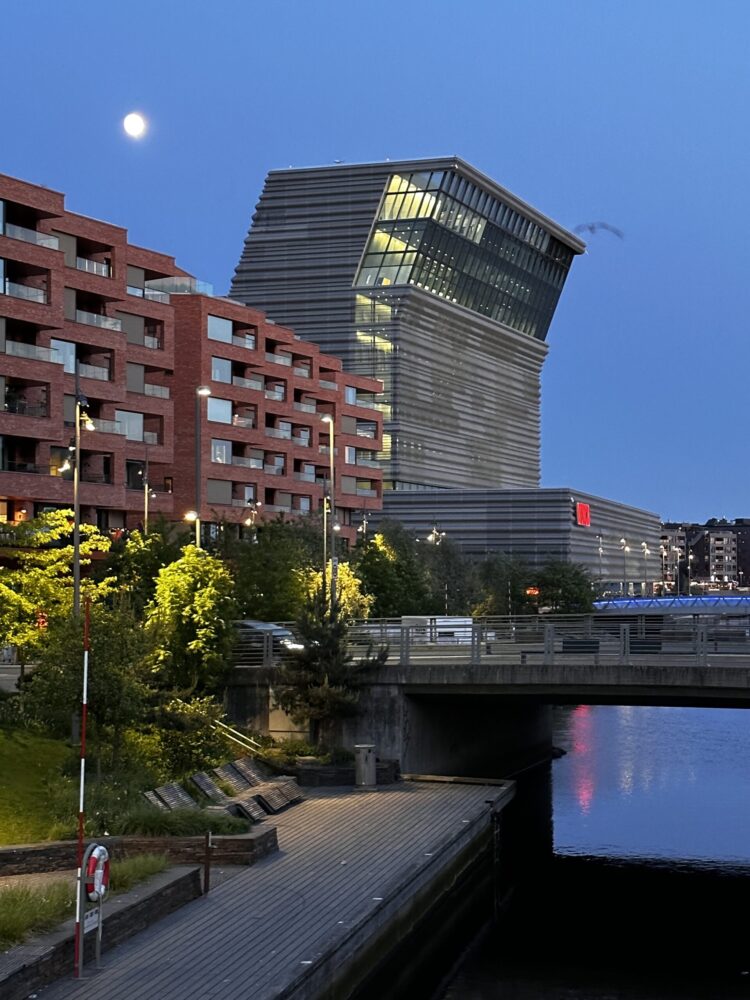
One wonders just want Munch’s figure was screaming at…. Modern Life?
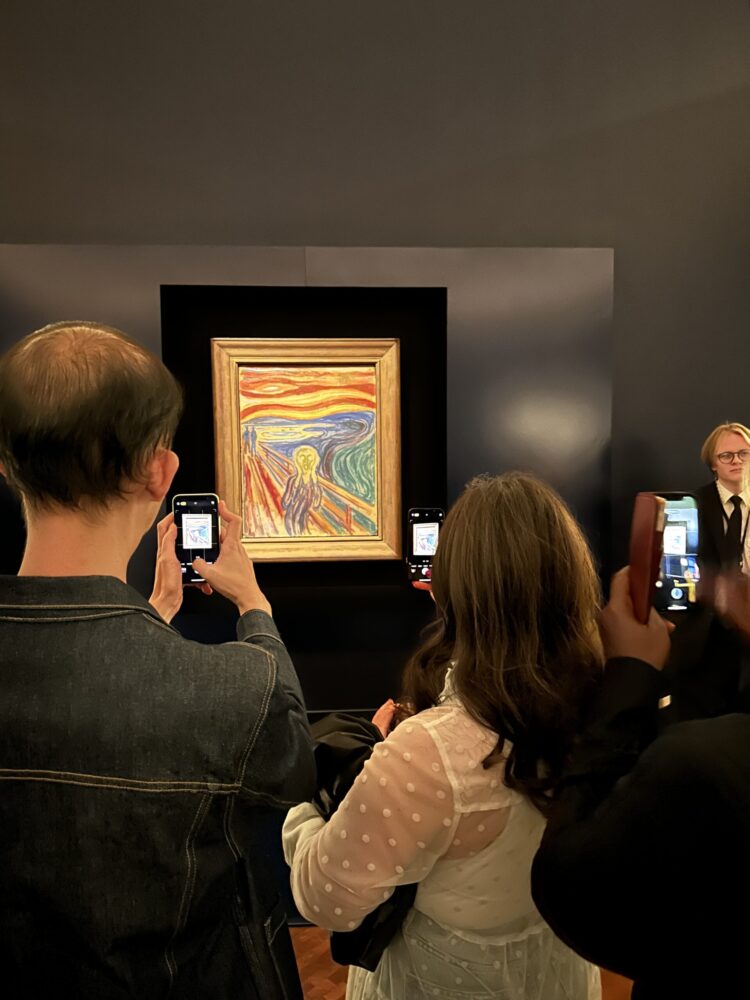






Love the wall and floor tiles. The chairs are absolutely FAB. Not really a lover of Islands in a kitchen but the very stylish Norwegian ones look great.
Forget the furniture, I want to know all about that gorgeous embossed-style black floor tiling in the hotel.
Love that semi cantilevered kitchen island. It looks timeless. What a great trip to undercover these beauties.
The Lundhs/Evi collaboration is more than laudable. I just can’t work out how the re-use of perfectly measured and fitted click on/off counter tops can transfer to another kitchen’s measured requirements, even without the permanent fixings. This is amazing.
That tile floor in the hotel!!
Lovely article – lots of interesting information and makes me want to go to Norway now. The Evi kitchens are beautiful and I love the idea of resurrecting long forgotten furniture designs. Very clever